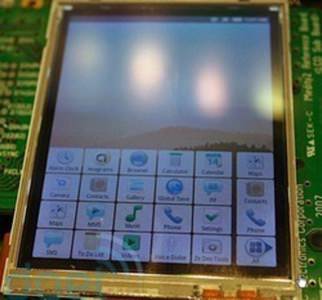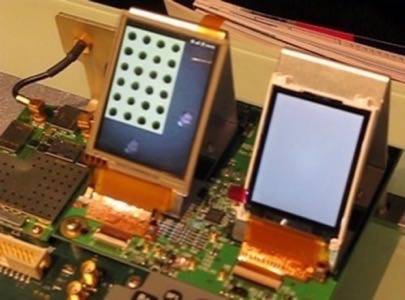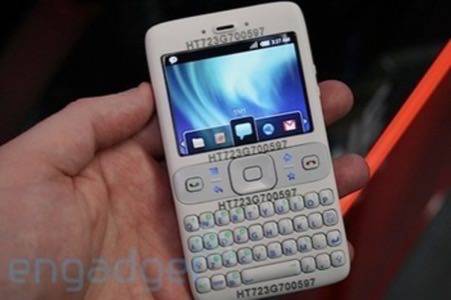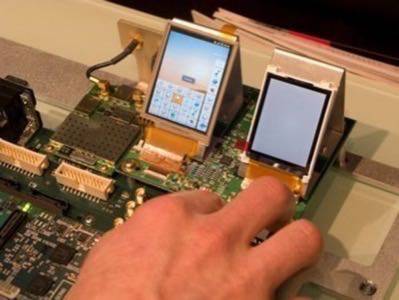Syndicated from last100, our digital lifestyle blog
Android has landed. And it looks like, well, some sort of space alien. Several companies at this weeks Mobile World Congress unveiled prototypes of Android, Googles highly anticipated, open-source operating system. But rather than showing off sleek, sexy cell phones, with a super-fast OS running groundbreaking applications, attendees were treated to reality.

Android, for now, is mostly a bunch of circuit boards, displays, solder, prototype phones, and alpha applications intended to show the mobile world that yes, in fact, Android and the so-called Gphones do exist and, to some degree, work. Theyre not vaporware.
Its not fair to laugh at the huge circuit boards: These are design prototypes and will of course be shrunk down to a fraction of this size, Charlie Sorrel writes for the Wiredsgadget lab.
But despite the fugly appearance, these Android phones are the buzz of the show. At the NEC booth, the guy pointed me straight past the other boards saying, This one is the Android. Thats the only one anybody is interested in.
So, without further ado, heres Android in all its, uh, splendor.
Getting started with Android
We began envisioning what a Gphone might look like and what features and functions it might have back in August. The picture became a bit clearer when Google announced the formation of the Open Handset Alliance and Android in early November, which is what chip makers, handset manufacturers, and third-party developers have been working with.

We didnt see evidence of their labors at CES, the big consumer electronics show, in Las Vegas in January. It wasnt the right venue to debut Android and Google-powered phones anyway.
The first real opportunity to show off Android progress is this week at MWC in Barcelona, where more than 50,000 attendees from every mobile company in the world in showing off its wares.
Historically, the MWC conference has centered around the mobile operators, wrote Richard Wong for Venture Beat, as they have played their position as kinds of the mobile industry. The industry players, and other vendors, would line up to try to show their wares to any operator executive who would listen.,
This year feels distinctly different. The operators are losing their status as the kingmakers — they no longer have dominant control of which technologies, services, and handsets consumers will see. Internet giants such as Google, Apple, Yahoo, Microsoft, along with Nokia, are all banging at the gate.
Knocking the loudest this week has been Android.
Android on Display
Before we proceed, you might want to stop by engadget and thumb through its excellent photo gallery of Android images. It will give you an idea of what were talking about here.

Gizmodo provides a short video and an example of a engineering breadboard here. Wired has more close-up images of these giant, unsexy phones from chip makers Qualcomm and NEC Electronics as well as a video on YouTube. PhoneMag.com also has images and a video of Android in action on an existing touchscreen phone.
Freescale, Marvell, NEC Electronics, Qualcomm, Arm, and Texas Instruments all had Android prototypes in various forms of development on display.
Pete Sayer, of the IDG News Service [via Infoworld], best summed up what he saw. The hardware ranged from bulky development boards with daughter cards sticking out at unlikely angles to more compact devices small enough to slip into your pocket, he wrote.
Texas Instruments ran Android on two devices showcasing different processors. These were some of the most polished prototypes shown, as you would expect from TI.
TI is a company that invests a great deal of resources to develop quality reference or proof-of-concept designs that demonstrate their chips in action (a strategy used successfully in the introduction of DLP products).
We dont do plastic, a TI rep told Sayer.

The TI devices sported one button access to key applications such as Web browsing, email, messaging, and video. The devices, which include Wi-Fi and Bluetooth, will also allow for the integration of different applications — a capability mostly limited to desktop computers. TI gave this example: a real estate agent could combine information from a database with mapping software to let customers easily locate properties on the go.
None of the big-name handset manufacturers had Google-powered phones on display, but Samsung and LG both said they will have Android devices available in early 2009.
Software Development on Android
Like hardware, software for Android was shown in various stages of development. Right now the UI is clunky and slow, Sorrel wrote for Wired, but the fact that so many manufacturers are already on board means that Android is already a success.

It will be a while before we see near-polished applications. Even so, TIs Ramesh Iyer, mobile Internet device product manager, told Sayer, Android cuts that [14 to 18 month software development cycle] dramatically. Its a disruptor.
One application of note, a mobile game called WiFi Army, shows the potential of Android and mashed-up applications. WiFi Army is a first-person shooter currently in beta. Its a mix of laser tag and the parlor game Assassin.
Players meet on the street using Google Maps and shoot each other with their phone cameras. Those with the highest number of unique kills earn points and bragging rights. Players can form teams, or armies, of up to 100 people. (Forbes.)
Garett Rogers at ZDNet looked at Android from a developers perspective, noting that the operating system itself still feels very beta. As far as development goes, the API is relatively difficult to work with, especially with its sub-par documentation and a lack of really good examples, he wrote.
Reactions to Android
So there you have it. Android is a bunch of crude prototypes, engineering breadboards, and promise.
Upon making his way to the Arm booth, Cliff Edwards of BusinessWeek was eager to get his hands on an Android device. To my surprise, he wrote, no trumpets blared. No visions came to me. Not one lousy bit of drool escaped my lips. The software . . . was fast and responsive. It showed tight integration with Google applications such as email and Web search. But I couldnt help but feel: So What?
As Forbes notes, the Google phone is not ready for prime time — but who would expect it to be at this time? Its Hollywood debut is still months away.
Photo credits: Engadget and Wired.
This post is syndicated from last100, our digital lifestyle blog covering Internet TV, digital music, Mobile Web and more. You can subscribe to last100 here.










